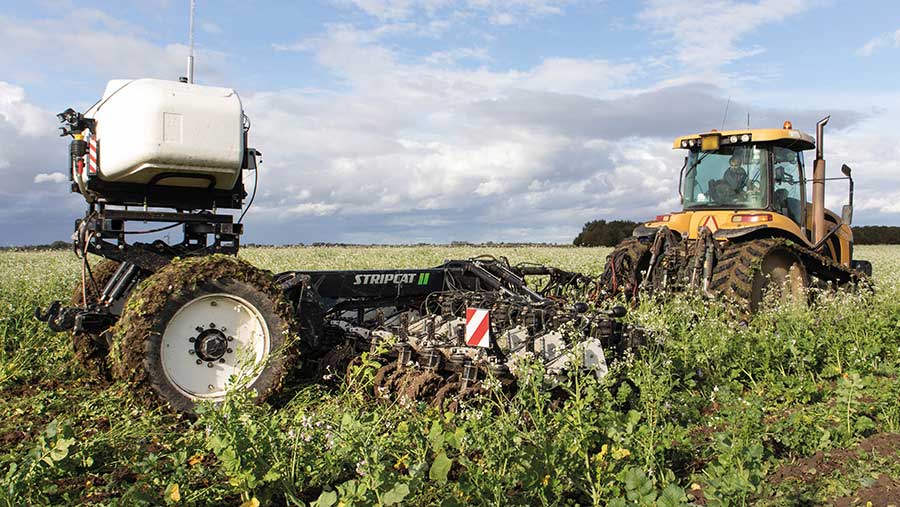5 steps to introducing a no-till approach on arable farms
 © Tim Scrivener
© Tim Scrivener Farmer-led organisation Base-UK will be recommending a five-stage approach to adopting regenerative farming at Cereals, for growers looking to start their no-till journey.
The five steps are:
1. Have a plan
Moving to a no-till system isn’t a quick fix and building a biological system requires patience, advises Base-UK.
See also: Spelt and rye earn premium spot in Berks organic rotation
The starting point should be determined by the farm’s rotation and the level of risk the farmer is prepared to accept.
Where combinable crops dominate the rotation, oilseed rape is often a good entry point, as it isn’t established by ploughing.
To avoid feeling overwhelmed by a new system, selecting a trial area or just a small proportion of the farm to try it on can be a good approach.
2. Build soil carbon
A biologically active soil gives healthier plants with functioning roots that require fewer interventions, so building soil carbon will bring both business and environmental benefits, claims Base-UK.
Soil carbon can be increased in a number of ways – from using the combination of photosynthesis and root exudates to feed soil microbes, to preventing losses from oxidisation and adding organic matter through residue management.
3. Minimise soil disturbance
Getting a healthy soil that functions well relies on minimising soil disturbance, so that nutrients become available, erosion is reduced and water loss is prevented, points out Base-UK.
Reducing tillage also limits the destruction of soil carbon and encourages the build-up of soil organic matter, which helps to store more nutrients and water.
Another good reason for reducing tillage is grassweed control. Without cultivation, weed seeds are left on the soil surface where they are less likely to germinate and more prone to mortality.
4. Keep soil covered
Aim for 60-100% soil cover, so that the soil surface is protected from erosion and the shading and mulching effects help with weed and pest management, suggests Base-UK.
Residue acts as a form of soil armour, helping to reduce wind and water run-off, maintain soil temperatures and reduce compaction, adds Base-UK, while also providing habitat for wildlife and a mulch for suppressing weeds.
5. Use rotations and integrate livestock to add diversity
Plant diversity can be added by widening rotations, as well as through cover crop mixes, companion planting, inter-cropping and sown understoreys.
Bringing benefits both above and below the ground, a diverse range of plants helps to reduce the need for interventions and keep the ecosystem in balance.
Integrating livestock is a good fast-track into a regenerative system, as grazing management can increase nutrition and allow a diversity of biology to flourish.
To find out more and talk to growers and agronomists who have experience in regenerative farming systems, visit Base-UK (stand 410) at Cereals.

